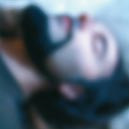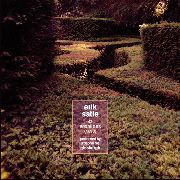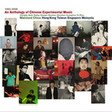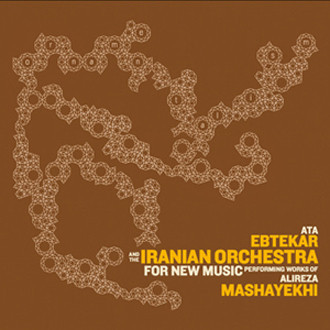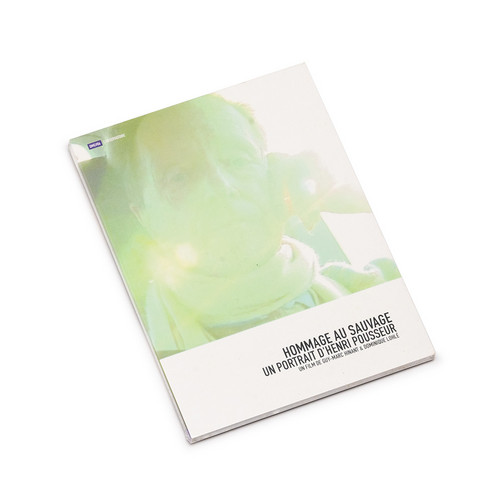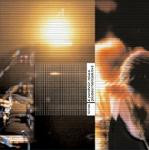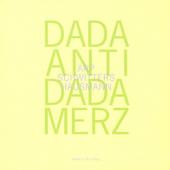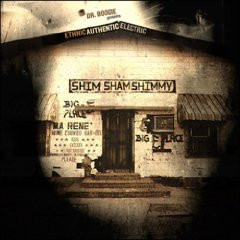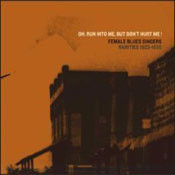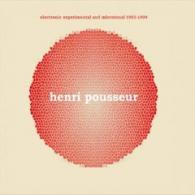★Sub Rosa
Anarchist Republic Of Bzzz
Anarchist Republic Of Bzzz is the exceptional and ephemeral reunion of two cult guitarists, Marc Ribot & Arto Lindsay and two inspired and engaged rappers, Sensational & Mike Ladd, with Seb el Zin at the helm. The group displays a level of urgency too rare nowadays. These five musicians break free from all the music rules and transcend all styles. This isn't free jazz per se, nor free improvisation or dub or hip-hop -- actually, the Anarchist Republic Of Bzzz's sonic manifesto is simultan…
Soliloques
Gabriel Severin has been active in the field of electronic music for almost two decades (Silk Saw, Jardin D'Usure, Ultraphonist, Rob(u)rang, Dead Hollywood Stars). This sound artist and musician has delved in several disciplines. He likes to research forgotten or obscure avant-gardes.
42 Vexations
16 page booklet including Cage's Place In the Reception of Satie by Matthew Shlomowitz. Erik Satie's 1893 Vexations is musique d'ameublement - literally, "furniture music", the phrase coined by Satie in 1917, where he identifies sound as drapes, tiling, wallpaper - items belonging to the environment and changing it simply by being in it, by actually becoming elements of the space. This recording is the second instalment in a series of furniture music (after Marcel Duchamp's Musical Erratum), and…
Soni Sclavus
Electro-acoustic out-sound experimentician Israël Quellet was born in Neuchâtel, Switzerland in 1972, and this is his second release for the Sub Rosa label - the fifth volume in their Musics in the Margin series.
extended loudspeakers
Jerrycans connected by a network of steel wires, each wire length and can location is adapted to the space. A loudspeaker is slipped inside one of the cans; the sounds it broadcasts make the wires vibrate. When these sounds are modulated (pitch, timbre, volume, density), the cans produce various resonances, which can be injected back into the speaker (feedback). The cans are hanging, so that listeners can circulate and choose different listening perspectives.
An Anthology of Chinese Experimental Music
GROUNDBREAKING! this four-disc collection of music from 1992-1998 might be one of the most amazing compilations of recent years, featuring more than four hours of music by 48 artists. The depth of the Chinese underground music scene is vast and widely varied, and until recently, quite inaccessible to westerners; by releasing this compilation, the Sub Rosa label has done the world a great service. Featuring pioneers like Dickson Dee and Dajuin Yao alongside more contemporary acts like Stingrays a…
Garifuna Traditional Music From Guatemala
Vivid documents of the music indigenous to the Garifuna community, recorded live in the field by ethnomusicologist Alfonso Arrivillaga Cortes in 1990. "Ibimeni a term associated with childhood and youth, meaning honey or sweetness in Garifuna. Ibimeni is also the name of a group of Garifuna musicians and dancers from Livingston, Guatemala, who interpret their traditional sounds in this album. this collection includes lullabies, festive chants, processional marches, and songs of religion and labo…
Sarod recital / live in Peshawar
Three beautiful extended ragas recorded last year in Peshawar: "Asad Qizilbash is the only Sarod player in Pakistan since 1992, keeping this traditional instrument and its music alive. Asad was born in 1963 to the famous violinist K.H. Qizilbash, who was responsible for closing the gap between western and eastern classical music. After attending a concert performed by his future Master, Ustad Amjad Ali Khan, Asad decided to devote himself to the instrument. Today, Asad Qizilbash has the honour t…
Musics In The Margin Vol.4
Fourth opus of musical art brut, faithful to our precepts, we search out self-taught musicians. That means people who make contemporary music outside the customary production and distribution channels and with the determination and creative gifts that stem from unmistakable artistic talent. Some of these musicians operate in mental or social isolation and make their music in special workshops while others can be classified with the spiritualist or visionary artists. This particular relationship …
Performing Works of Alireza Mashayekhi
Perfect follow-up to the highly acclaimed Persian Electronic Music (SR277), this new Persian Music album involves a cast of seasoned musicians performing works written by legendary Iranian composer Alireza Mashayekhi; in which Ata Ebtekar (aka Sote) was granted complete creative freedom by Mashayekhi himself to transform these compositions into fully realized pieces using his techniques of synthesis and electronic manipulation. It's an organic electrocution without sacrificing the beauty of the …
Hommage Au Sauvage - A Portrait
This portrait of renowned composer Henri Pousseur arrives just days after his death at the hands of bronchial pneumonia, aged 79. The documentary goes some way towards conveying Pousseur's warmth and openness as well as giving some impression of the breadth of his career and its accomplishments. The film documents Pousseur taking one last trip to Basel's Fondation Paul Sacher, to which he's donated his full archive of sound materials, research and memos. In addition to spending time during the j…
I Never Promised You A Rose Garden - A Portrait
A fascinating ninety-minute film capturing David Toop at home with his record collection, I Never Promised You A Rose Garden not only gives an insight into the sounds most important to the renowned composer, author and Wire journalist, it also lets you hear them for yourself, switching as it does between Toop in discussion about the music and isolated playback against a black screen. Being a very fine music journalist and theorist, Toop makes an excellent candidate for a film like this. He's unc…
Four Electronic Pieces 1959-1966
Sub Rosa presents Pauline Oliveros' early and definitive tape and electronic music of the late fifties and sixties -- all released for the first time ever! Born in Texas in 1932, Pauline Oliveros is more than ever an important American composer. Her accomplishments speak to an array of disciplines: her pieces for accordion; the creation of the Deep Listening Institute, a center dedicated to fostering artistic creativity through workshops, performances, and new technologies; her approach to impro…
Dr. Boogie Presents Rarities from the Bob Hite Vaults
These rare pieces are taken from Bob Hite's fabulous collection of 78rpm records. A historical collection that helped, in its own way, save from oblivion the rural bluesmen who have dropped out of the scene decades ago and made possible their reintegration to history. Everyone is now entitled to hear this chunk of the treasure. Compiled by the famous DJ Dr Boogie with the help of Fito De La Parra (Canned Heat drummer).
4 Parabolic Mixes
2CD feat 4 unpublished tracks based on "Parabolic studies" (SR174) the idea was to ask other musicians, of different generations, to attempt a new mix on the basis of these 8 studies: Oval, Main/Robert Hampson, Philip Jeck and Henri Pousseur himself.
The Complete Recordings
From the Joyce archives with the exclusive permission of the Joyce foundation, the only two recordings of the author, reading from "Ulysses" in Paris during the twenties and from "Finnegans Wake" in Cambridge, Massachusetts.
Dada Anti Dada Merz
Featuring Raoul Hausmann, Kurt Schwitters, Hans Arp edited by Marc Dachy (Dada specialist), this is a complete cd build on the 3 axes of the european Dada avant-garde: 3 major artists who read their own texts. Hans Arp was close to Tristran Tzara when he created Dada in Zürich. Kurt Schwitters one of the major figure of the german avant-garde and Raoul Hausmann one of the creator of Dada in Berlin. this is the first time that the 3 mighty artists appear together on one record.
Dr. Boogie Presents Shim Sham Shimmy
Is it really possible to imagine what modern music would sound like if a few pioneering geniuses had not had the idea of electrifying their instruments, especially guitar and harmonica, between 1945 and 1950? Some purist will regret this evolution, but, in the '50s, the new sound will be heard in all the studios and night clubs of the United States; it will become a staple on the radio, in stores, at weddings, and private parties. It will radically transform the music scene and allow hundreds of…
Oh, Run Into Me, But Don't Hurt Me! - Female Blues Singers (Rarities 1923 - 1930)
...Female Blues Singers - Rarities 1923-1930. LP version, previously issued on CD. The Sub Rosa label presents a collection of works from obscure and forgotten female blues singers. These voices have survived, through hardship and death, through the dark years of The Great Depression, when profoundly sincere and ferociously ironic blues were at their peak. However, this selection does not constitute a theme-based anthology: it is simply a few little-known female blues singers whose ambiguous lea…
electronic experimental and microtonal 1953-1999
This is the 5th part of the complete experimental and electronic music by the composer - after Liège à Paris (1977), Eight parabolic studies (1972), Four parabolic mixes (1972-2001, Mixed music (1966-70) and before Narrative voices and electronic (1960-1982), Paraboles-Mix avec Leçons d'Enfer (1972-1999) and Experimental Electronic and Noise (1954-61). Here, 5 rare pieces that come from 5 decades and performed by Rohan de Saram (Quatuor Arditti), Evert van Tright (who played mainly Stockhausen),…

